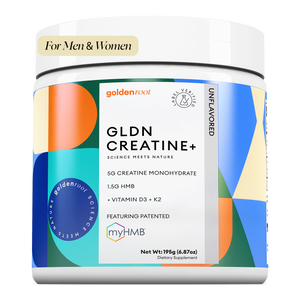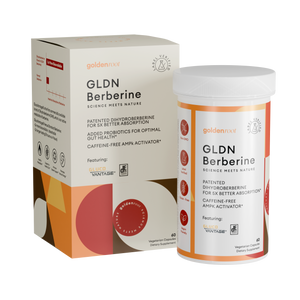Starting a GLP-1 medication can feel like stepping into a new world of appetite control and metabolic support.
Yes, you can and often should supplement mindfully when taking GLP-1 drugs to ensure you get essential nutrients and preserve muscle mass.
In this guide, you’ll learn everything, and it’ll walk you through understanding why supplements matter and how to choose the right ones and spotting deficiencies early.
Related products:
- liquid magnesium for anxiety
- best creatine supplement for muscle retention
- best berberine supplement for blood sugar
Why Supplements Matter When You’re Taking GLP-1 Drugs?
GLP-1 (glucagon-like peptide-1) agonists mimic a hormone your intestines produce after eating. By slowing gastric emptying + signaling fullness to your brain, they help:
- Reduce appetite, helping you to reduce your calorie intake.
- Improve blood sugar control, stimulating insulin release when you need it.
-
Support weight loss, often with significant results.
Key point: Slower digestion + lower appetite = fewer opportunities to absorb essential vitamins, minerals, and protein. Over weeks and months, that can lead to nutrient gaps.
Read more: Optimizing Protein Intake on GLP-1 Medications: (How Much Do You Really Need)
Top Nutrient Deficiencies to Watch For on GLP-1 Therapy
The key concern is that reduced appetite on GLP-1 or GIP/GLP-1 treatments can lower protein intake, leading to muscle loss, weakness, and reduced function.
1. Protein and Muscle Preservation
- Appetite suppression may cut overall protein intake.
-
Not getting enough or low protein can cause muscle loss and slow metabolism.
2. B-Vitamins (especially B12) and Energy Levels
- Critical for energy, nerve function, and red blood cell production.
-
Deficiency signs: fatigue, tingling, mood changes.
3. Vitamin D & Calcium, and Bone Health
- Bone strength and immune support rely on these.
-
Low dietary intake or sun exposure heightens risk.
Read more: how long does it take for magnesium to work
4. Iron and Oxygen Transport
- Vital for oxygen transport and cognitive function.
-
Look for unexplained fatigue, pallor, or breathlessness.
5. Electrolytes (magnesium, potassium, sodium) & Hydration
-
Slower eating patterns and GI side effects (nausea, diarrhea) can disrupt balance.
6. Fiber & Prebiotics and Digestive Health
- Slowed transit time may cause constipation or bloating.
-
Gut health benefits from consistent fiber intake.
Read more: GLP‑1 Drugs for Weight Loss & Diabetes (How They Work, Benefits, and Side Effects)
How Supplements Can Fill Nutrient Gaps on GLP-1 Medications?
Protein powders, fiber blends, and omega-3s help GLP-1 users plug nutrient gaps for muscle retention and overall health, while post-therapy support prevents weight and muscle rebound.
The Best Supplements to Take on GLP-1 Therapy
Essential supplements for most adults include vitamin D3 (or D2), B12, C and folic acid; key minerals like iron, magnesium and calcium; plus omega-3 fish oils and probiotics.
Benefits of Strategic Supplementation:
- Supports muscle maintenance
- Fills vitamin & mineral shortfalls
- Eases GI side effects
- Promotes bone and joint health
Read more: What Effect Do GLP-1 Drugs Have on Bone Health and Muscle?
|
Supplement |
Why it may help |
Typical dose and tips |
Protein Powders: Whey and Plant-Based |
Preserves lean mass and keeps metabolism active |
20-30 g per serving, 1-2 times daily |
Daily Multivitamin |
Covers broad spectrum: B-complex, A, C, D, E, K, zinc |
One tablet with breakfast or lunch |
Vitamin D₃ + Calcium |
Supports bone density and immune function |
D₃: 1,000-2,000 IU; Ca: 500 mg (or lab-guided) |
Collagen Peptides |
Aids skin elasticity, joints, and nails |
5-10 g powder in water or smoothie |
Electrolyte Blend |
Maintains hydration, nerve & muscle function |
Magnesium 200-400 mg + balanced Na/K |
Fiber and Prebiotic Supplements |
Keeps bowel movements regular, feeds good bacteria |
5-10 g fiber with plenty of water |
Bold takeaway: Start with protein and a multivitamin as your foundation, then layer in D + Ca, collagen, electrolytes, and fiber based on your labs and symptoms.
Read more: is creatine safe while breastfeeding
Supplements to Avoid or Use With Caution on GLP-1 Drugs
Avoid chromium, berberine, and alpha-lipoic acid; they can drop your blood sugar too low. If you get a stomach upset, skip high-dose vitamin C or zinc.
And steer clear of high-calorie meal replacements, which can undermine your weight-loss goals.
High-Dose Vitamin C & Zinc
- May worsen nausea, diarrhea, or cramping.
-
Tip: Pause on injection days or until GI settles.
Chromium & Berberine
-
Both lower blood sugar; combined with GLP-1, can risk hypoglycemia.
-
Always discuss with your healthcare provider first.
Alpha-Lipoic Acid (ALA)
- Powerful antioxidant that can also drop glucose levels.
-
Keep a close eye and regularly check your blood sugar levels if you add it.
Pro tip: Keep a simple supplement log and note how each one makes you feel so that you can fine-tune your regimen with your clinician.
Read more: Can GLP-1 Drugs Be Taken Orally? Unpacking the Options for Diabetes and Weight Management
How to Tell If You’re Deficient in Key Nutrients
Here are some of the common symptoms that show you are deficient in vitamins and minerals:
Common Symptoms of Nutrient Deficiencies
-
Protein/Energy: Muscle weakness, slow recovery, fatigue
-
B12: Numbness/tingling in hands/feet, mood swings, memory fog
-
Iron: Pale skin, fast heartbeat, shortness of breath, hair loss
-
Calcium/Vitamin D: Bone pain, muscle cramps, dental issues, dizziness
-
Electrolytes: Cramps, headache, irregular heartbeat, confusion
-
Fiber Lack: Constipation, bloating, irregular stools
When to Get Your Labs Checked
- Baseline: Before or within the first month of starting GLP-1
-
Follow-up: 3-6 months in, then annually
Key Blood Tests to Ask For
- Complete blood count (CBC)
- Serum B12, ferritin, 25-OH vitamin D
-
Serum calcium, magnesium, and electrolytes
Insider tip: Many symptoms overlap with common side effects of GLP-1 drugs, so labs are the most reliable way to catch a true deficiency.
Read more: Who Should Think Twice Before Taking GLP-1 Drugs for Weight Loss?
How to Build Your Personalized Supplement Plan on GLP-1 Therapy
Step 1: Assess Your Diet, Symptoms, and Labs
Review diet, symptoms, and baseline labs with your clinician.
Step 2: Prioritize Protein and a Multivitamin
Protein + Multivitamin daily.
Step 3: Add Targeted Supplements Based on Needs
Vitamin D + Calcium → Collagen → Electrolytes → Fiber.
Step 4: Monitor and Adjust Regularly
Track energy, muscle strength, digestion, and lab results.
Step 5: Reassess Regularly
Life changes (workouts, travel, stress) may shift needs.
Remember: Supplements are not one-size-fits-all. What works at month 1 may need tweaking by month 6.
Read more: Creatine: Not Just for Muscles, A Boost for Your Brain Too
Final Thoughts
Taking a GLP-1 medication opens the door to better appetite control and glycemic health, but it also changes how your body absorbs + uses nutrients.
By following a clear, science-backed supplement strategy, you’ll protect your muscle, bone, and overall well-being:
- Start strong with protein and a multivitamin.
- Monitor labs and symptoms at 3-6 months.
- Customize with vitamin D + calcium, collagen, electrolytes, and fiber.
- Avoid supplements that heighten GI distress or risk hypoglycemia.




